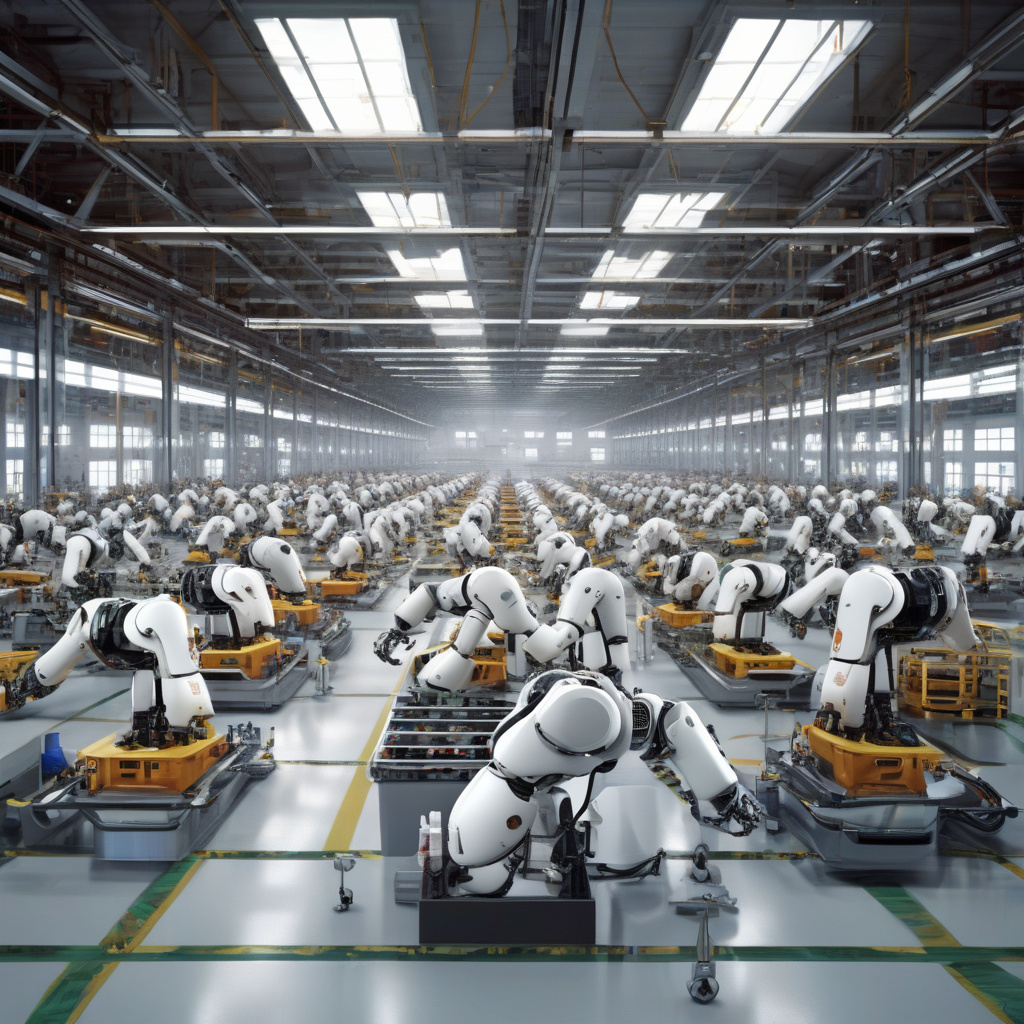China Bets Big on Humanoid Robots to Transform Factories
China is making significant strides in the realm of artificial intelligence, particularly in the deployment of humanoid robots within manufacturing facilities. With Beijing’s substantial subsidies aimed at advancing AI technologies, the integration of humanoid robots into factory settings is rapidly becoming a reality. This strategic move not only showcases China’s commitment to innovation but also underscores the country’s ambition to revolutionize traditional manufacturing processes.
The concept of humanoid robots operating alongside human workers may seem like a scene from a sci-fi movie, but in China, it is quickly transitioning from fiction to feasibility. By leveraging Beijing’s generous AI subsidies, companies are now able to explore and implement cutting-edge technologies that were once deemed futuristic. The result? A new era of smart manufacturing that is characterized by efficiency, precision, and scalability.
One of the primary drivers behind China’s push for humanoid robots in factories is the urgent need to enhance productivity and address labor shortages. As the manufacturing landscape continues to evolve, with an increasing emphasis on automation and digitalization, the demand for advanced robotics has never been higher. Humanoid robots offer a versatile solution to these challenges, capable of performing a wide range of tasks with speed and accuracy.
Moreover, the integration of humanoid robots into factory environments brings a host of benefits beyond operational efficiency. These advanced robots can handle intricate assembly processes, operate machinery with precision, and even collaborate with human workers seamlessly. By augmenting human capabilities with robotic technology, companies can create a harmonious man-machine synergy that maximizes output while ensuring quality and safety standards are met.
In addition to improving productivity, humanoid robots also play a crucial role in driving innovation and competitiveness in the manufacturing sector. By embracing AI-powered automation, companies can streamline their production processes, reduce lead times, and adapt swiftly to changing market dynamics. This agility is a valuable asset in today’s fast-paced business landscape, where the ability to innovate and iterate quickly can make the difference between success and stagnation.
The mass deployment of humanoid robots in Chinese factories is not just a technological advancement; it is a strategic imperative. As the global manufacturing hub, China is acutely aware of the need to stay ahead of the curve and lead the charge in Industry 4.0 transformation. By investing in humanoid robots and AI technologies, the country is positioning itself as a trailblazer in smart manufacturing, setting new benchmarks for efficiency, quality, and sustainability.
In conclusion, China’s bold bet on humanoid robots to revolutionize factory operations is a testament to the country’s vision and determination to shape the future of manufacturing. With Beijing’s unwavering support through AI subsidies, companies are poised to unlock a new era of possibilities where man and machine work in harmony to drive progress and prosperity. As the world watches China’s ambitious foray into smart manufacturing, one thing is clear – the age of humanoid robots in factories is no longer a distant dream but a tangible reality.
China, humanoid robots, factories, AI subsidies, manufacturing industry
